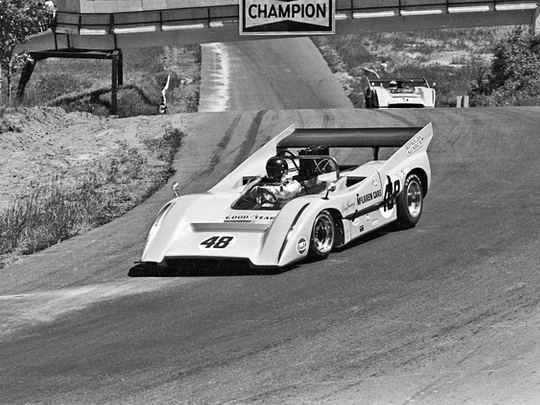
Everything is bigger, louder, and just plain better in America. Only, when it came to the infamous Can-Am racing series, the Canadians went aboot making just as much noise, hey.
The Canadian-American Challenge Cup was a motorsport class contested in the Sixties and Seventies, spanning the greatest race tracks in North America and attracting full-blown works teams such as Porsche, Lola, McLaren, and Chaparral.
It says a lot that racing stalwarts such as Ferrari and BRM couldn’t even stick it out to race competitively. Can-Am had a bit of everything, but most of all, it had healthy doses of ruthlessness.
The FIA’s rulebook overseeing competition in Can-Am races filed everything under its Group 7 category. Fortunately, the Group 7 rulebook was barely a leaflet. Anything went in Can-Am, and if you felt like fielding a Formula 1 Grand Prix car with enclosed bodywork, then good for you.
For years good old displacement ruled, with engine capacities rising beyond seven-litres, right up until the Seventies when monster turbochargers conquered all before them.
Teams could get away with almost anything, with scrutineers seemingly basing
their decisions on the outrageousness of the car.
Crazy equalled legal. The regulations permitted unlimited engine sizes, and allowed all forms of force-feeding, as well as aerodynamics direct from mad-engineers’ imaginations. Just about the only rule was that the car had to have two seats (some simply stretched their GP or F5000 cars’ cockpits).
The resultant racing was on-the-edge ragged, close, and extremely dangerous,
and consequently attracted some of the best drivers of the era. To wield and, more importantly, control the kind of power Can-Am cars produced — regularly between 1,000-1,500 horsepower — the teams had to call up some absolute legends.
Gilles Villeneuve, Bruce McLaren, Danny Hulme, Mark Donohue, Chris Amon, Mario Andretti, ‘Black’ Jack Brabham, endurance specialist Vic Elford, Phil Hill, Jacky Ickx, Pedro Rodriguez, Jackie Stewart, Masten Gregory, Parnelli Jones, and even actor and film director Paul Newman, all raced in Can-Am, so there was no shortage of stars.
It was only the escalating costs and insane power levels that spelled the death of Can-Am racing in 1974, but not before spectators in hallowed grounds such as Watkins Glen, Road America, Laguna Seca, Mont Tremblant, and Riverside Raceway got to see all the action.
The technologically advanced Can-Am cars regularly lapped circuits faster than contemporary F1 cars, and Mark Donohue’s fearsome Porsche 917/30 Spyder even blitzed the Talladega Superspeedway with a 355kph record lap that stood until 1980. Only in America… All right, fine, and Canada…











